Today, I got something in the mail that has been in the works for months: my bamboo tenkara rod. A while back, I contacted Chuck Ledgerwood from Prize Catch Inc. and asked him if he could make me a tenkara-style rod in bamboo. He was really enthusiastic about the project right from the start and in the following weeks, we started putting all the pieces together to see what such a rod might look like. It should be noted that this isn’t a traditional hollow tenkara rod–it’s spit cane. Also, it’s only 9 feet in length so some will surely call into question whether it really is a true tenkara rod or not (which is why “tenkara” is in quotes in the title of this post). Of course, some call it to question whether tenkara is truly “fly fishing” or not (I happen to think it is). But, that’s another story. Whatever it is, it’s something unique and hopefully a contribution to the evolution of tenkara fishing that is already taking place in the West.
My goal was to create a rod that combined my love of bamboo with my passion for tenkara that would work well for very small, brushy streams where the rod and line lengths need to be short enough to be cast under overhead foliage. With that in mind (and the fact that split cane had the potential to be fairly tip heavy) I decided on a 9 foot length as a good compromise.
We ordered the blanks from China and Chuck put together all the components according to my specifications. Here are some of the features:
It’s a 3-section, 2-tip design with a half-wells grip. For those unfamiliar with bamboo rods, you have two tips so you can alternate them between fishing trips to minimize warping.
The cap on the butt of the grip is walnut and features a laser-engraved tenkara reverse hackle fly.
The ferrules are standard metal ferrules found on most Western Bamboo rods. Each tip has a lilian cord that is secured with a few wraps of rod winding thread and some rod varnish.
Just above the grip, is the rod and maker information.
A nickel silver winding check makes a nice transition from the grip to the blank.
By now, you’re probably asking yourself how it casts. The answer is beautifully! It’s a very crisp action that throws a furled line well. I haven’t fished with it yet or tried level lines but I cast it in the backyard today with both 9 foot and 10.5 foot lines and it worked great. If I had to translate the action into tenkara terms, I’d say it’s probably closer to a 7:3 than a 6:4 but I’ll have to do more testing to make that determination.
What This Rod Is
- An experiment. As far as I know, this is the first rod built in the West using split cane to try to emulate a tenkara rod. There are probably a lot of other design paths that could/should be tried out if split cane becomes a viable strain in the evolution of tenkara fishing.
- A fun piece of gear. There’s just something that feels good about bamboo. It’s a rod I’ll only take out on special occasions when I want something more traditional or nostalgic in my hands than graphite.
- A beautiful piece of art. Just like any hand made bamboo fly rod, this one is worthy of a wall. In fact, I might find a special rack to hang it on the wall of my gear room/office. It’s definitely a conversation starter and the ultimate niche within a niche. I appreciate unique things and it doesn’t get much more unique than this!
- Light (considering it’s bamboo). The weight is 3.8 oz. which is a little heavy compared to graphite tenkara rods but light for a 9 foot bamboo Western rod (the lack of a reel seat and guides helps).
What This Rod is Not
- A practical rod for backpacking. By it’s very nature, bamboo takes a little more care than your average graphite rod so I doubt I’ll ever take it on a backpacking trip where it might get broken. But as stated above, that was never it’s purpose.
- An all-in-one fishing tool. This rod was designed for a very specific purpose (with a nod to nostalgia) and it will never replace more versatile tenkara rods like my Tenkara USA Iwana or Amago. But, it has it’s place in my quiver just like every club in a golf bag has it’s specific purpose.
At any rate, I’m happy with this first step and am excited to test it on the stream. As people that are drawn to tenkara, I feel that we are an inherently innovative tribe always trying to push the envelope. This concept had to be tried and I will be interested to see if it sparks other ideas. And to be clear, when I say that tenkara will evolve in this country, it’s not a knock against tradition and simplicity, rather it’s with a passion for innovation with an appreciation for tradition (and how they can blend together).


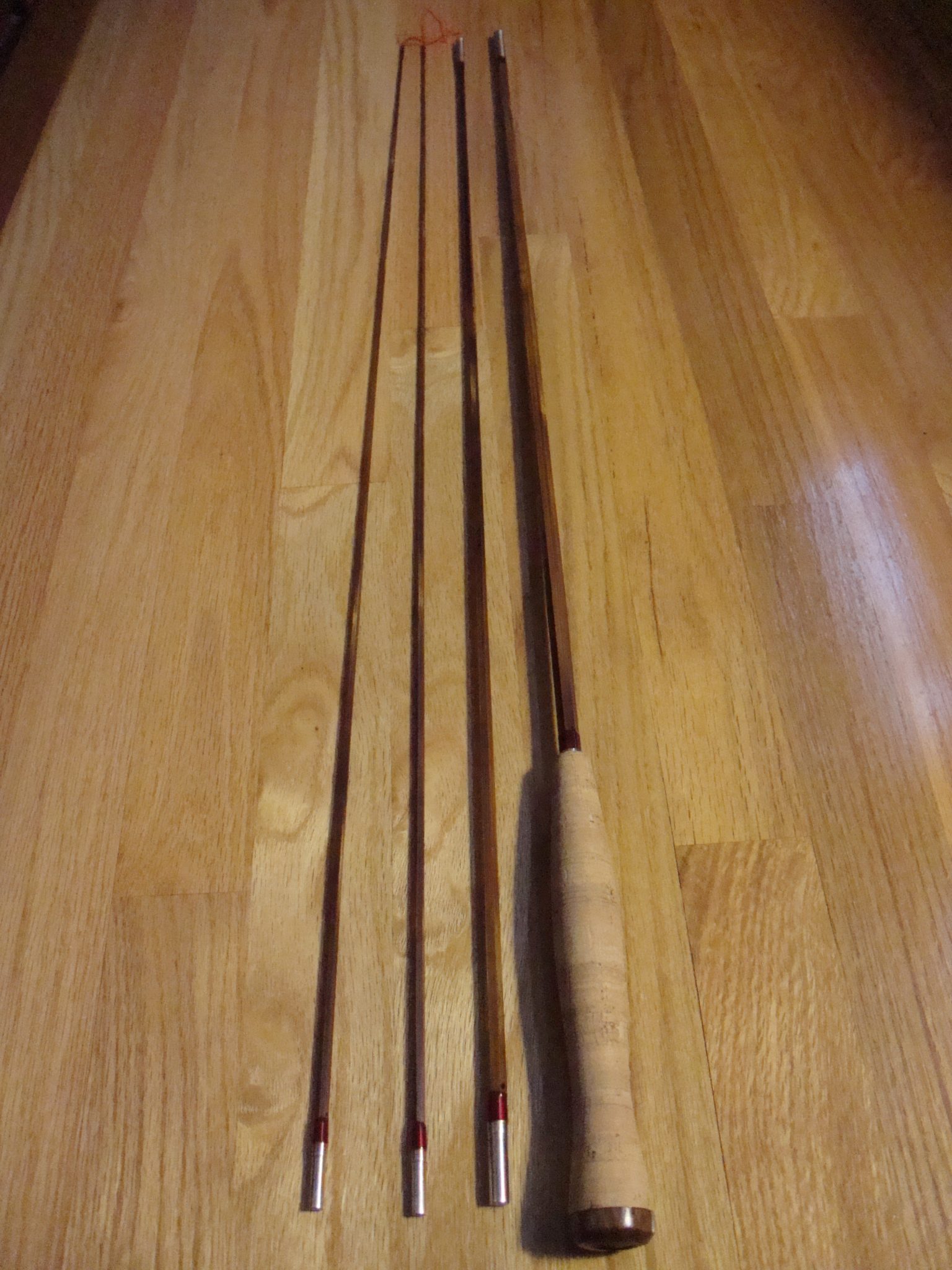
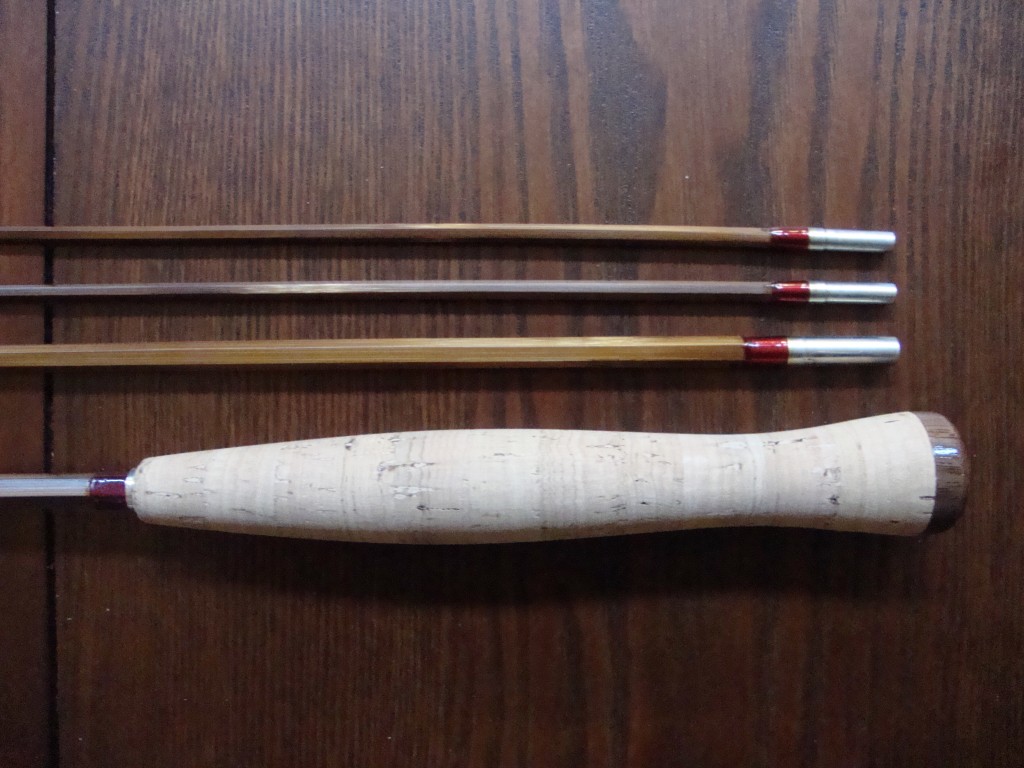
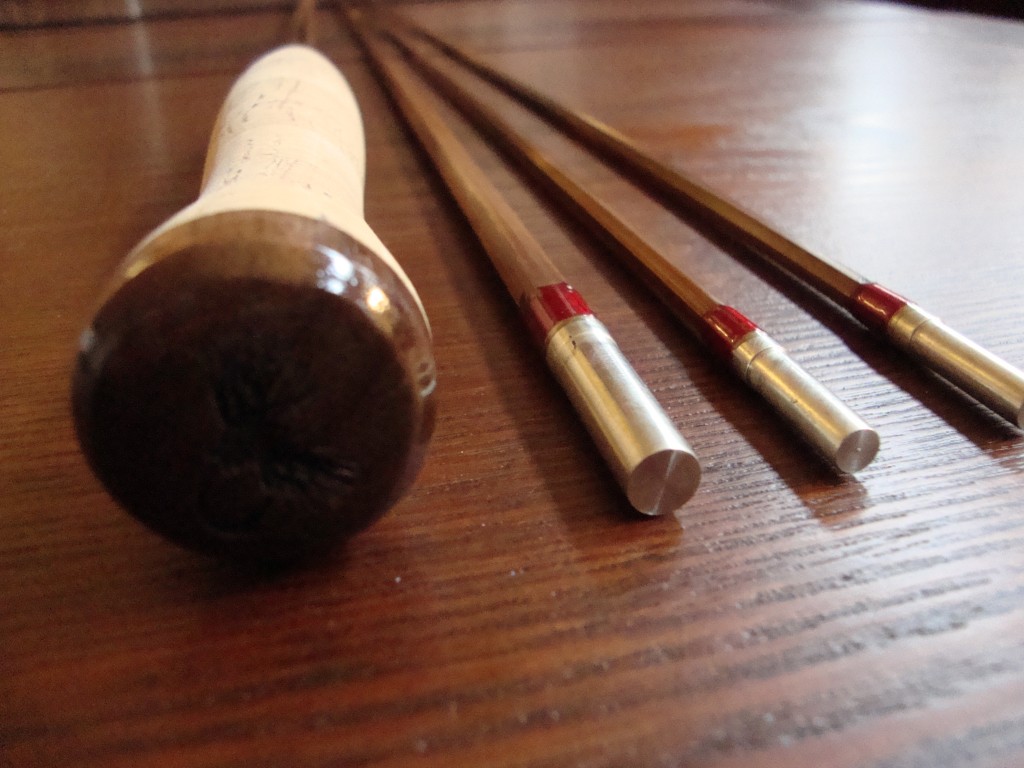
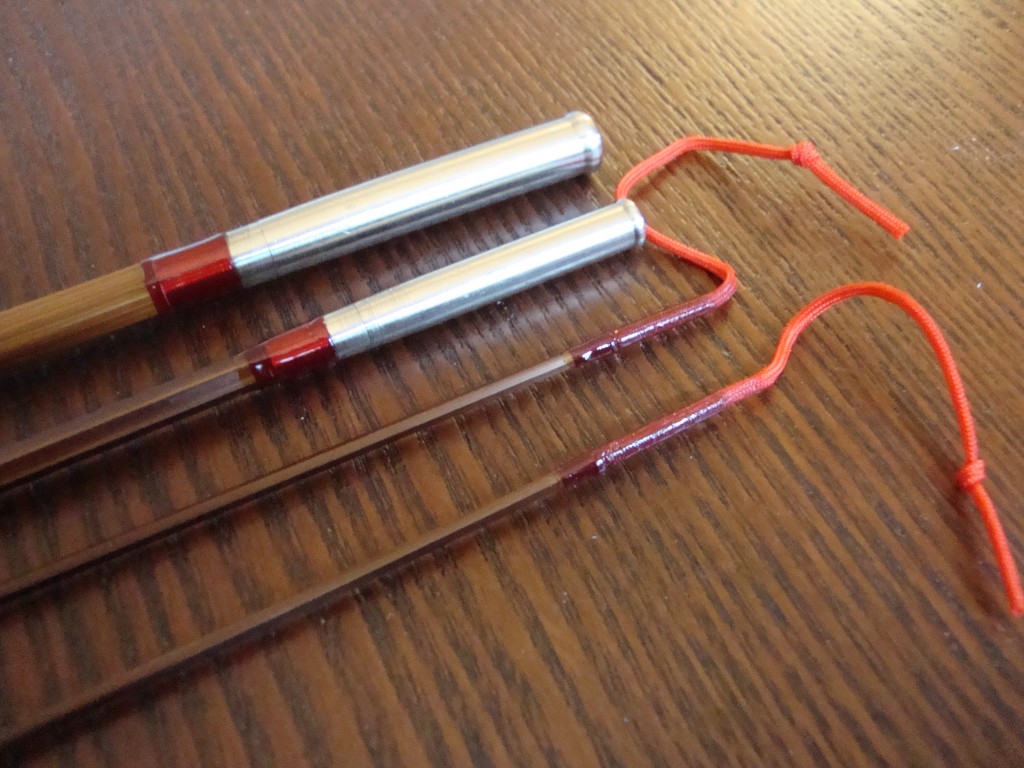
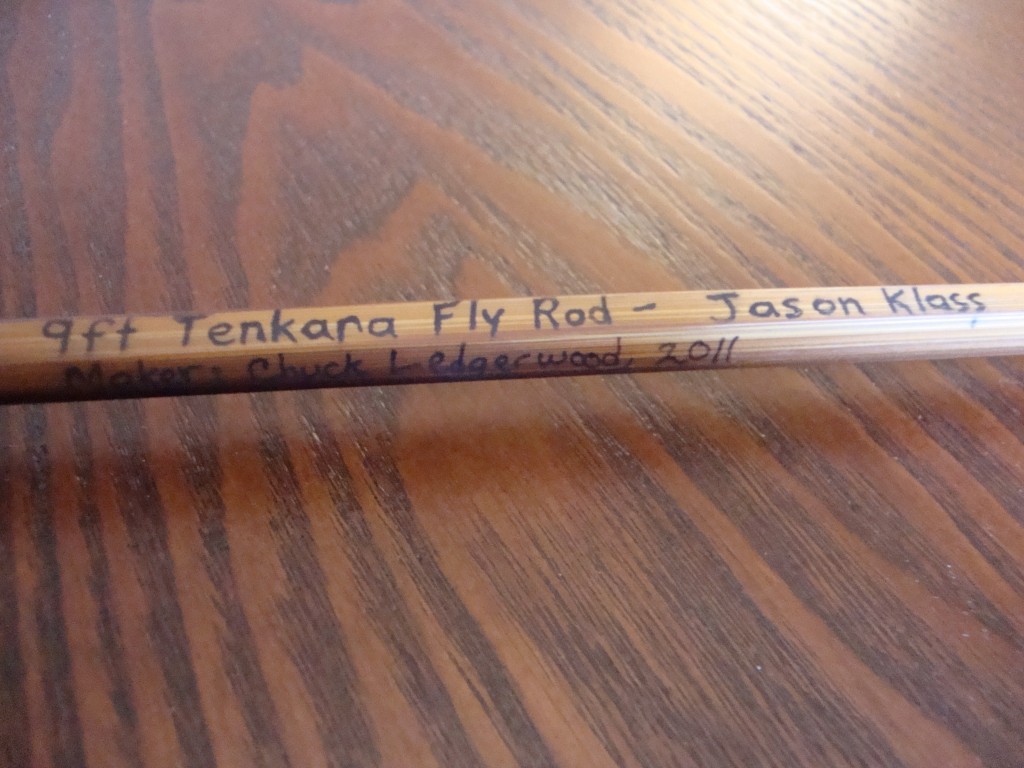
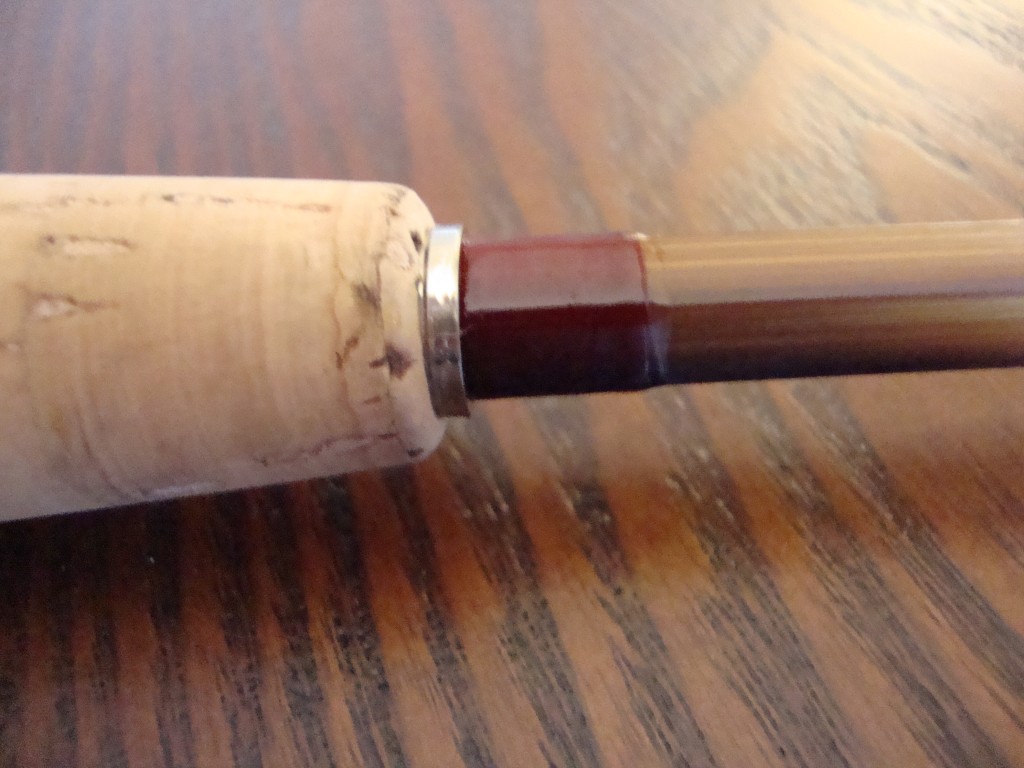






Jason – wayyyy cooool! Beautiful is an understatement. I am looking forward seeing this puppy for real! Good stuff.
Jason, that thing is really cool. Certainly, you’ve taken it out back and gave it a cast?
That’s a great looking rod. How do you like the half wells with no reel seat? I used that on the 7′ graphite rod I built, but wondered if it would feel out of balance on a 9′.
It’s a little short. I might replace the handle with a little longer one.
Jason – either way its a beautiful rod and the walnut butt cap is a really nice feature.
Jason – that’s a nice looking rod.
I had one similar made as well and am pretty disappointed with it. Split cane doesn’t offer a classic Tenkara action – it’s so fast – like 9:1. It feels more like crippled Western fly fishing, with a tip section that’s too weak.
I’m on the hunt now for a bamboo tenkara rod – probably unsplit cane – with a softer action that can more delicately and precisely deliver the short line with a more open loop, and offer a more durable tip than split cane, which doesn’t seem to handle a tight bending radius well. We’ll see!
Good work for experimenting with this, and good luck with it. The rod you had made is a pretty neat little treasure.
Ryan,
Just out of curiosity, which taper was yours? This one is a Payne 400 and it doesn’t feel too fast to me. But like any split cane attempt at a tenkara style rod, it is tip heavy which is why I would only fish it for short periods of time on special occasions. I wouldn’t want to fish it all day.
Jason — Hardy Fairy, 9613. I have this taper in a conventional western rod, and it casts very slow when it starts to get loaded with about 30 feet of DT3 line. In a Tenkara configuration with no line weight — it’s very different. Yes, split canes are tip heavy…my current project is a hybrid (lower sections cane, upper 2 sections graphite) – with the middle section serving as the energy transition, which is tricky.
Ryan,
WAAAAAAT? A Hybrid bamboo/graphite tenkara rod? Talk about a niche within a niche within a niche within a niche! Interesting concept and I see the design principles behind it. But adding graphite sections to a bamboo rod ruins the nostalgia and aesthetics for me. Still, it MUST be tried! I aplaude your experimentation and look forward to hearing your results. Pictures would be great too!
How about hollow building it for a lighter feel.
Jason beautiful rod! I was intrigued by this post and found tenkara globale web site they have some really beautiful rods on it check it out it might give you some great ideas for your next experiments. Thanks for sharing jason its always a pleasure reading your posts
Thanks. Their rods look interesting but are too short for me. I really prefer a 13 ft. rod. But that length starts to get kind of heave even in hollow bamboo.
I love it I too just recently ordered parts to put together a 7’1/2 bamboo 3/4 wt 3 pc rod.Growing up in the islands we used bamboo pole to fish back then there was no graphite rods and fiberglass was not considered a good rod to fish for Large ( Ulua) GT at the time.My dad held a 13′ Calcutta Bamboo bait casting rod custom built from a old Japanese man who owne a fishing store in Kalihi where I grew up….I remember seeing these bamboo poles shiny and decorated with silk string wraps.
I too miss the swishing with Bamboo so I decided to tinker with this one.Will send more inf and pictures.
The Lost Hawaiian
Hi Gilbert, I would love to see pictures!